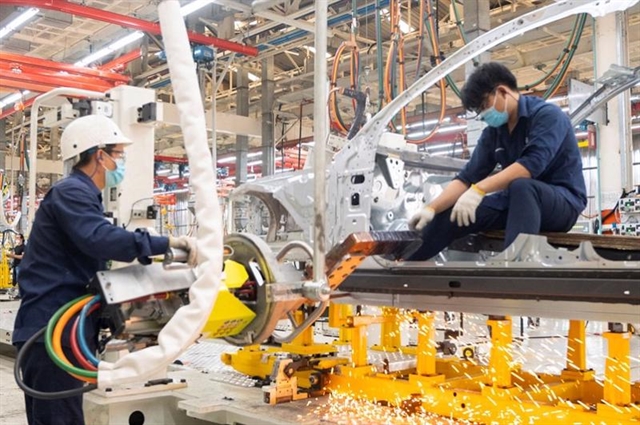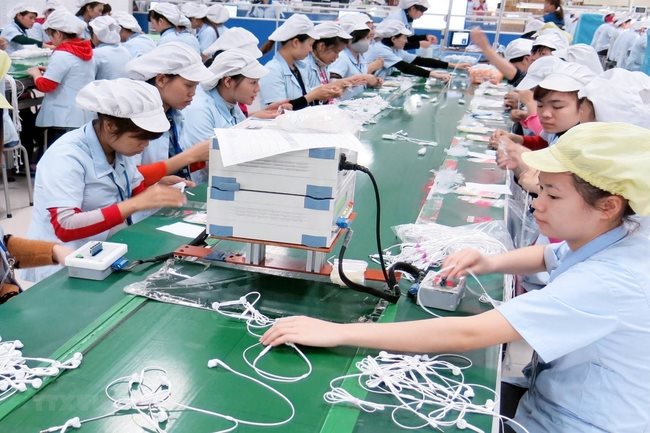Some 85 per cent of VN enterprises remain outside of Industry 4.0
Some 85 per cent of VN enterprises remain outside of Industry 4.0
As many as 85 per cent of industrial enterprises in Viet Nam still lag behind the fourth Industrial Revolution (Industry 4.0), and only 13 per cent are at the beginner level, one official has warned.

Nguyen Duc Thanh, director of the Viet Nam Institute for Economic and Policy Research (VEPR) was speaking during the Launching Conference of Viet Nam’s Annual Economic Report 2019 co-organised by VEPR and the Friedrich Naumann Foundation (FNF) Viet Nam in Ha Noi on Wednesday.
“At present, most Vietnamese enterprises are just standing in front of the threshold of the fourth industrial revolution, not yet really immersed in it,” Thanh said.
“It is important to bring Industry 4.0 into real life and integrate it into the ongoing strategies and programmes of businesses, thereby positioning their future and long-term development,” Thanh said.
“The impact of technology in the workplace has not yet been witnessed significantly. Nevertheless, adoption of robotic automation has already started penetrating some industries including automobile, computer and electronics, electrical equipment.”
Sooner or later, advances in technology will start affecting Viet Nam. Given the growth model and its position in the global value chain, the risk to economy may arise in two possible ways, Thanh was quoted as saying in the Viet Nam Annual Economic Report 2019 report.
Firstly, Multinational corporations (MNCs) may exit Viet Nam in search of a higher skilled labour force. Secondly, enterprises will automate the manufacturing process, laying off a substantial amount of low skilled labourers, the report said.
“The first risk is less likely to impact, however, the second risk seems inevitable. In this context, a priority focus on skills and workforce readiness is critical for Viet Nam,” the report added.
Two GDP scenarios
At the conference, the report also pointed out two scenarios for the country’s economy this year.
It focused on the country’s economy on the threshold of the digital economy which poses new challenges in face of the possibility of breaking the sectorial and market structure, together with the shift of the whole global systems of production, management and administration.
In the first scenario, Viet Nam’s economy will grow by 6.56 per cent, almost equal to the target set by the National Assembly.
Thanh said this was possible in the context of the unfavourable economic conditions in the world as a result of the escalation of the US - China trade war which leads to Viet Nam’s more serious trade deficit with China.
According to the second scenario, which is more likely than the first, the growth will be 6.81 per cent, equal to the target set by the National Assembly. This can be made possible by the impact of the growth last year, coupled with efforts by the Government in improving the competitiveness and productivity.
The report also predicts that inflation this year will be harder to control and can amount to 4-5 per cent as a result of many internal and external factors.
In order to rein in inflation, management offices will have to maintain a close watch on the developments of prices in the second half of the year, and the State Bank of Viet Nam will have to keep its cautious monetary policy in the future, Thanh said.






















